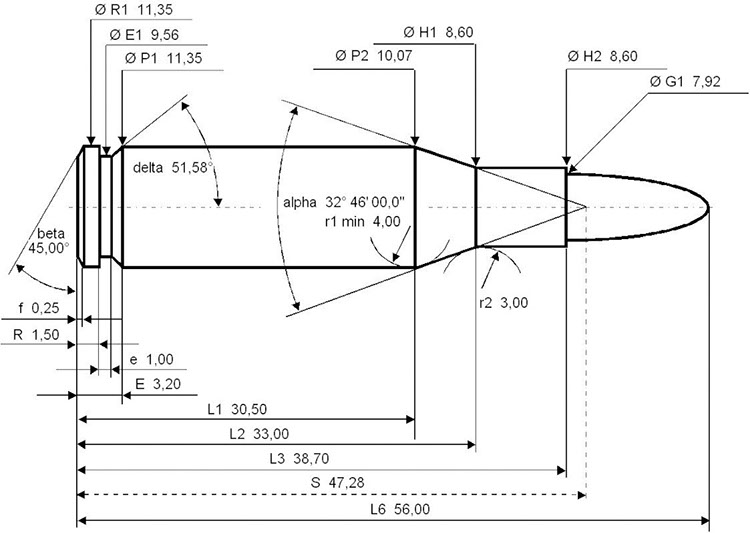
As the push toward Berlin took place on the eastern European battlefields during World War Two, the Red Army came to realize two things: the majority of small arms combat was occurring at relatively short range and that the Germans, while frequently outnumbered astronomically, were imposing heavy losses on Soviet soldiers.
The reason for this was the German soldier was frequently outgunning his counterpart, particularly those armed with the Sturmgewehr 44 and its 7.92x33mm Kurz ammunition. The success of the StG-44 was its ability to deliver accurate fire at significantly longer ranges than those equipped with the PPSh-41 machine pistols and at a higher rate than those with Mosins, both of which being the staple weapons of the Red Army's infantry by this time of the war.
This taught the Soviets a hard lesson. Although the Germans were ultimately overwhelmed with man power and equipment, this new combat doctrine the Wehrmacht began was one which the Soviets sought to duplicate with their very own assault rifle. The ultimate result of that endeavour was the AK-47, which would go on to be the most recognizable assault rifle, if not firearm, in history.
But even before the AK-47 came to be, it was recognized that there was a need for an intermediate rifle round that was less powerful than the existing rifle rounds to allow for 'accurate enough' sustained fire of ranges up to 500m. Just as the Germans had done to create the Kurz, the Soviets too shortened their 7.62x54R rifle round with further design cues taken from experimental German rounds. The As a result of this work, the 7.62x39mm round was created, quickly proving its qualities in reliability and effectiveness in all manner of field conditions and temperatures.
It was first used in similarly new Soviet developments such as the RPD light machine gun, which was replacing the Degtyaryov (DP) machine gun, and the SKS, which was an evolution of the operationally limited SVT-40. More importantly was the AK-47 being chambered for this ammunition because it proved so reliable and ideal for the AK's intended combat purpose. It would almost seem as if it was purpose built for the AK-47; a rifle renowned for its reliability in all manner of conditions. As a result of its wide spread within the Soviet sphere of influence, the 7.62x39mm has seen almost immeasurable and unceasing production since the end of World War 2.
With the fall of the Iron Curtain, it found its way into Canada and, being amongst the most plentiful calibres in the world, is extremely cheap. With the SKS also arriving in Canada, proving mutually abundant and relatively cheap, it became a popular firearm for the budget shooter and has garnered a large following amongst Canadian firearm owners. With similar ballistic characteristics to that of much of the venerable commercially-loaded 30-30 Winchester, steel-cored surplus 7.62x39mm ammunition carries an average cost that's two to three times cheaper than the cheapest 30-30 Winchester.
The popularity of the round has driven manufacturers to produce their own 7.62x39mm chambered firearms. For those of you who enjoy the AR versus AK debate, why not a 7.62x39mm chambered AR-15 capable of shooting 1” groups at 100 meters? How about a Ruger Mini-30, an upsized 7.62x39mm version of their popular Mini-14? Prefer a bolt action? Then why not a Remington Model 799 with its Gewehr 98 rifle action or a Savage Arms Model 10 FCM Scout? You get the point.
While most of the 7.62x39mm you'll come by is steel cased, there are plenty of brass cased rounds available like M67 Yugoslavian surplus. Not only is it a solid 7.62x39mm option, it is good for reloading so as long as care for the corrosive primers is applied. While the steel cased stuff can be reloaded too, given the price point of the commercial product it might not be practical for cases that probably should only be reloaded a few times. A potential stumbling block for shooters who get their hands on surplus brass is that it is frequently Berdan primed, which can prove problematic for some, but is certainly still reloadable with the right tools.